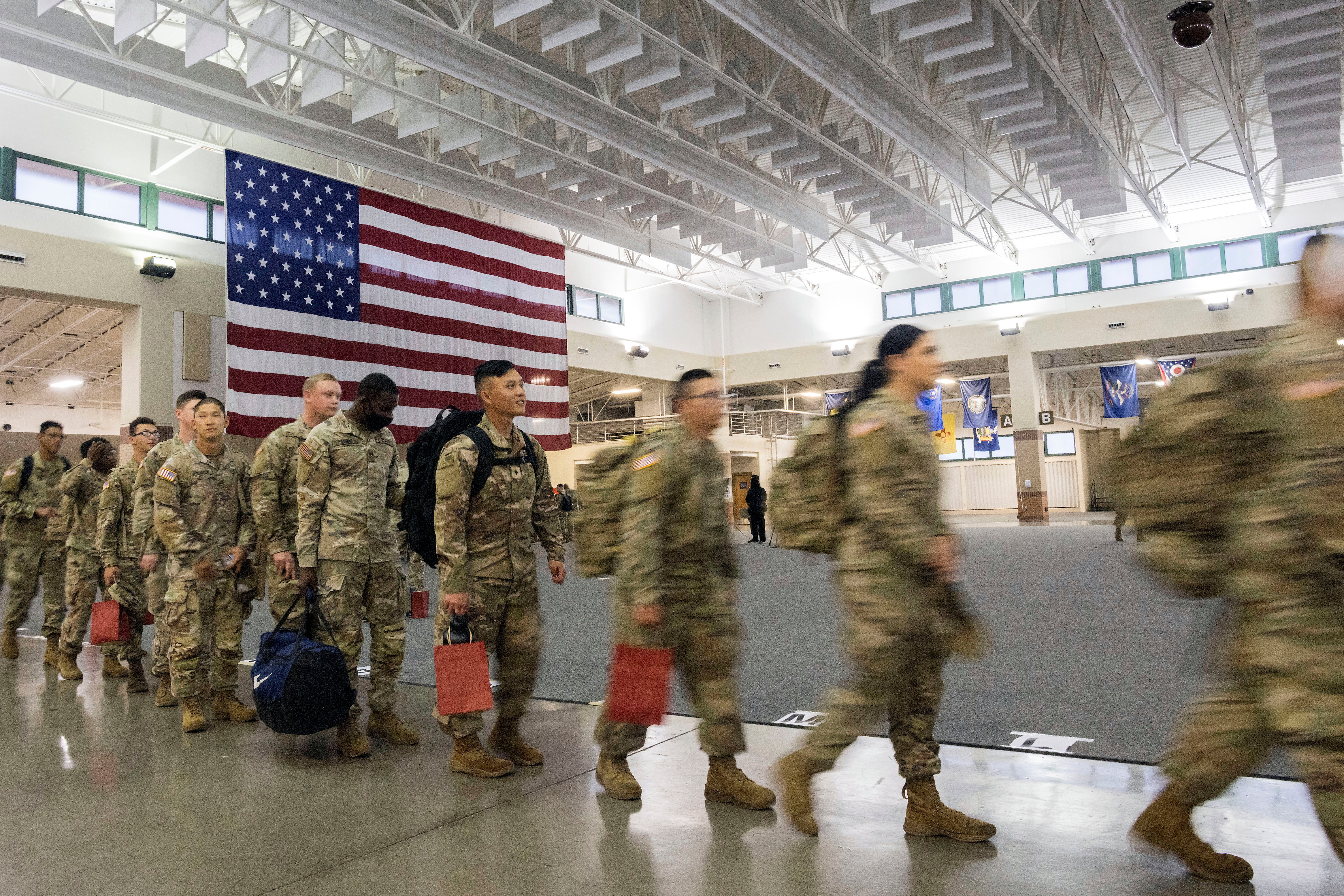Army cuts force size amid unprecedented battle for recruits
The Army is significantly cutting the total number of soldiers it expects to have in the force over the next two years, as the U.S. military faces what a top general calls “unprecedented challenges” in bringing in new recruits

Your support helps us to tell the story
From reproductive rights to climate change to Big Tech, The Independent is on the ground when the story is developing. Whether it's investigating the financials of Elon Musk's pro-Trump PAC or producing our latest documentary, 'The A Word', which shines a light on the American women fighting for reproductive rights, we know how important it is to parse out the facts from the messaging.
At such a critical moment in US history, we need reporters on the ground. Your donation allows us to keep sending journalists to speak to both sides of the story.
The Independent is trusted by Americans across the entire political spectrum. And unlike many other quality news outlets, we choose not to lock Americans out of our reporting and analysis with paywalls. We believe quality journalism should be available to everyone, paid for by those who can afford it.
Your support makes all the difference.The Army is significantly cutting the total number of soldiers it expects to have in the force over the next two years, as the U.S. military faces what a top general called “unprecedented challenges” in bringing in recruits.
Army officials on Tuesday said the service will fall about 10,000 soldiers short of its planned end strength for this fiscal year, and prospects for next year are grimmer. Army Gen. Joseph Martin, vice chief of staff for the Army, said it is projecting it will have a total force of 466,400 this year, down from the expected 476,000. And the service could end 2023 with between 445,000 and 452,000 soldiers, depending on how well recruiting and retention go.
With just two and a half months to go in the fiscal year, the Army has achieved just 50% of its recruiting goal of 60,000 soldiers, according to Lt. Col. Randee Farrell, spokeswoman for Army Secretary Christine Wormuth. Based on those numbers and trends, it is likely the Army will miss the goal by nearly 25% as of Oct. 1. If the shortfalls continue, Martin said, they could have an impact on readiness.
“We’ve got unprecedented challenges with both a post-COVID-19 environment and labor market, but also competition with private companies that have changed their incentives over time,” Martin told a House Armed Services subcommittee on Tuesday. Asked if the Army will have to adjust its force structure to meet national security and warfighting missions around the world, Martin said: “We don’t need to do that immediately. But if we don’t arrest the decline that we’re seeing right now in end strength, that could be a possibility in the future.”
Cutting the size of the Army is the best option, said Wormuth.
“The Army is facing our most challenging recruiting environment since the inception of the all-volunteer force. This is not a one-year challenge. We will not solve this overnight," she said, adding that the service is looking at a wide range of steps to recruit more soldiers without lowering standards or sacrificing quality.
“We are facing a very fundamental question,” she added. "Do we lower standards to meet end strength, or do we lower end strength to maintain a quality, professional force? We believe the answer is obvious — quality is more important than quantity.”
The Army’s recruiting problems are the most severe across the military, but the other services are also having a tough time finding young people who want to join and can meet the physical, mental and moral requirements.
Senior Air Force, Navy and Marine Corps leaders have said they are hopeful they will meet or just slightly miss their recruiting goals for this year. But they said they will have to dip into their pool of delayed entry applicants, which will put them behind as they begin the next recruiting year.
The services bring in recruits all year around, but usually send them to basic training and boot camp over a spread-out period of time. The delay can help recruits prepare for entry-level training, particularly the more physical demands.
Military leaders are also banking on cash as an incentive. They are spending tens of thousands of dollars in increased bonuses to woo recruits, hoping to compete with other employers around the county as unemployment sits at about 3.6%.
In January, the Army, for the first time, began offering a maximum enlistment bonus of $50,000 to highly skilled recruits who join for six years. At the time, Maj. Gen. Kevin Vereen, head of Army Recruiting Command, told The Associated Press that shuttered schools during the COVID-19 pandemic and the highly competitive job market have posed significant challenges for recruiters.
The military services rely heavily on face-to-face meetings with young people in schools or at fairs and other large public events. And they are only now really starting to get back to something close to normal after two years of the pandemic.
Compounding the problem is the low unemployment rate and the fact that private corporations may be able to pay more to lure workers. And, among young people, only about 23% are physically, mentally and morally qualified to serve without receiving some type of waiver.